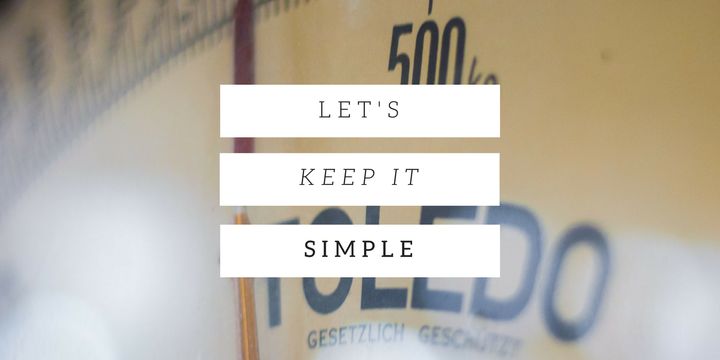
I’ve discussed calories and macros but we haven’t yet looked at how you put it all together to lose fat.
Today’s post will break down how to set up your diet and training to lose fat in 5 simple steps.
Let’s jump right in.
1. Determine Your Maintenance Calories
The first step when it comes to fat loss is to determine what your maintenance calories are. This is the number of calories you need daily to maintain your weight and the easiest way to do is to use the following calculation;
Bodyweight in lbs x 14 = maintenance calories
Once you know your maintenance calories you’re then ready to set your calorie deficit and lose weight. This is our next step.
2. Calculate Your Calorie Deficit
When it comes to losing weight and, in turn, fat, you need to be careful with how quickly you lose it. Too fast and you’ll lose your hard-earned muscle along the way. Too slow and you’ll find it sluggish and frustrating.
The trick is to find that sweet spot where you’re losing 1 – 2 lbs a week, this is optimal speed of weight loss to preserve muscle mass and maximise fat loss.
You’ll find this sweet spot with a calorie deficit of between 15 – 20% under your maintenance calories.
For example, if your maintenance is 2,500 calories, 20% is 500 calories. Which means your fat loss calories will be 2,000 calories a day.
Now you know your fat loss calories you can set your macros.
3. Set Your Fat Loss Macros
Whilst calories are the most important for manipulating your weight, macros are vital for body composition. For a quick recap on macronutrients, what they are and what they do, read this.
When eating in a calorie deficit you want to keep protein at around 0.8 – 1g per pound of body weight to help preserve muscle mass and increase meal satiety. Protein has 4 calories per gram.
Fat should be kept between 20 – 30% of your daily calorie intake to help with satiety, hormone production and the uptake of fat soluble vitamins. Fat has 9 calories per gram.
The rest of your calories should go to carbs to help provide energy for the body and fuel your workouts. Carbs have 4 calories per gram.
Using a 160 lb male as an example here is how you’d calculate your macros:
Protein = 1g per pound of bodyweight
- For a 160 lbs – 1 g per lb of bodyweight = 160 g
- Calories from protein = 160 x 4 = 640 kcals
Fat = 30% of 2,000
- 2,000 x 0.3 = 600 kcals
- Grams of fat per day = 600 / 9 = 67 grams
Carbs = remainder of daily calories
- Daily calories = 2,000 kcals
- Minus protein calories 640 + 600 = 1,240 kcals
- 2,000 – 1,240 = 760 kcals
- Grams of carbs per day = 760 / 4 = 190 g
Daily Totals
- Total Calories = 2,000 kcals
- Protein = 160 g // 640 kcals
- Fat = 67 g // 600 kcals
- Carbs = 190 g // 760 kcals
Now your calorie deficit is set, and your macronutrient ratios have been calculated you can turn your attention to training.
4. Train for Muscle Preservation
When it comes to train in a calorie deficit you want to set up your routine in a way that promotes the preservation of muscle mass, part of this is achieved through a consistent protein intake but the other half of the equation is how you train.
In particular there are a few key rules to adhere to;
Reduce your overall training volume and/or frequency
With a reduced recovery rate, you want to train a little differently when in a calorie deficit. This doesn’t mean doing nothing, you still need to do some weight training to preserve muscle mass and maintain strength, but you don’t want to do as much as you would when building muscle.
Use cardio strategically to compliment your fat loss
Use cardio to make dieting easier, for example, a few high intensity cardio sessions a week or a few 30 – 60mins walks on your rest days are a great way to promote fat loss and give you more dietary flexibility.
Don’t train to failure
With a lower rate of protein synthesis because of your calorie deficit your body will struggle to repair, recover and grow after intense training. To avoid the break down of muscle you want to avoid training to failure when trying to lose fat.
5. Track Your Progress
The road to fat loss is paved with non-linear progress, distractions and doubt. The key to overcoming this is to track your progress so you can see the progress you’re making over the days, weeks and months.
The 2 key stats to track when losing fat are;
Weight
Weigh yourself daily in the same conditions and take a weekly average to ensure you’re losing 1 – 2 lbs weekly.
Waist Circumference
Take fortnightly or monthly measurement of your waist circumference and look for a steady decline.
Summing Up
There we have it, a straight forward intro to losing fat in 5 simple steps.